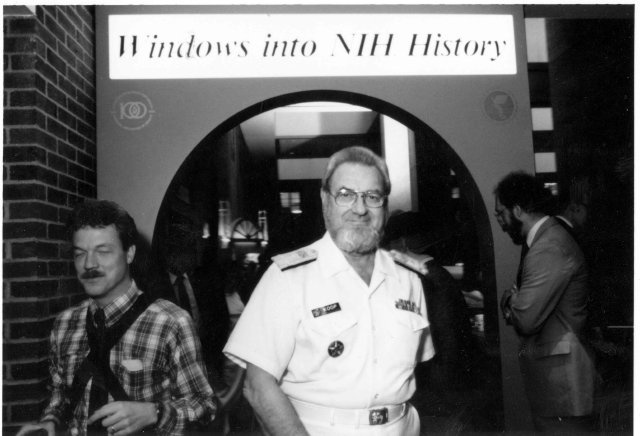The Office of NIH History & Stetten Museum at the National Institutes of Health
The Office of NIH History and Stetten Museum (ONHM) at the National Institutes of Health advances the historical understanding of the biomedical research conducted at the National Institutes of Health by documenting, preserving, and interpreting records and artifacts. The office creates exhibits and other products, and it helps scholars and researchers to navigate the rich history of the National Institutes of Health.
Mission Statement
The Office of NIH History at the National Institutes of Health exists to advance historical understanding of biomedical research within the NIH and the world. Through preserving records of significant NIH achievements, innovative exhibits, and educational programs, the Office of NIH History explores the past to enhance present understanding of the health sciences and the National Institutes of Health. The Stetten Museum complements the mission of the Office of NIH History through the interpretation if its collections for the NIH community and broader public.
The History of the Office of NIH History and Stetten Museum
The NIH Office of History and Stetten Museum, Located in Building 60, The Cloister. Formerly the Home of the Sisters of Visitation of Washington, D.C., this building now serves the NIH as the Mary Woodward Lasker Center for Health Research and Education. Constructed in 1923, the building predates the NIH in Bethesda.
In the early 1950s, Louise Endicott, a long-time member of the NIH Scientific Reports Branch, asked to be appointed as an unofficial agency historian. Ms. Endicott retired in 1956. In 1962, Dr. Wyndham Miles was appointed as the first professional historian for the NIH. He served until 1974, when he moved to the History of Medicine Division at the NIH National Library of Medicine.
During the years leading up to the NIH centennial commemoration, in 1987, Dr. DeWitt Stetten Jr., an NIH Deputy Director for Science (emeritus), proposed the establishment of a museum of medical research instruments to preserve the material heritage of biomedical research. In October 1986, this proposed museum, to be combined with a revived NIH History Office, was created. Dr. Victoria A. Harden was appointed NIH Historian and Curator. In May 1987, the museum was renamed in honor of Dr. Stetten. Then, in 2002, the organization was renamed the Office of NIH History with two components, the Historical Research Unit and the Stetten Museum. Dr. Harden retired in 2006, and Dr. Robert Martensen served as director from 2007 through 2012, until his untimely death. The Office activities have continued under acting directors.
The DeWitt Stetten Jr. Museum of Medical Research, also known as the NIH Stetten Museum, preserves and interprets through physical and virtual exhibits the material culture of the scientific work of the NIH. Established in 1986, the NIH Stetten Museum collects instruments important to scientific research, especially instruments and technologies developed at the NIH. The Museum also collects non-scientific objects related to the general history of the NIH, including architectural artifacts, artwork, and clothing. Search our collections online or contact the NIH Office of History Stetten Museum curator at museum@nih.gov.
Dr. and Mrs. DeWitt Stetten cutting ribbon to Windows into NIH History
Dedication of the DeWitt Stetten Museum of Medical Research. Dr. Stetten had proposed the creation of a museum of medical instruments in the early 1980s. Among the attendees at the dedication was the PHS Surgeon General Dr. C. Everett Koop.
Oversight
The Office of NIH History is a component of the Office of Intramural Research (OIR) in the Office of the Director. OIR is responsible for the budget and operational authority of the Office of NIH History. In planning for the work of the office, the Deputy Director of Intramural Research and the Director of the Office of NIH History are advised by a committee of federal scientists and historians.
Related Pages
Visit the Virtual Exhibits page for an index of current and past exhibits.





